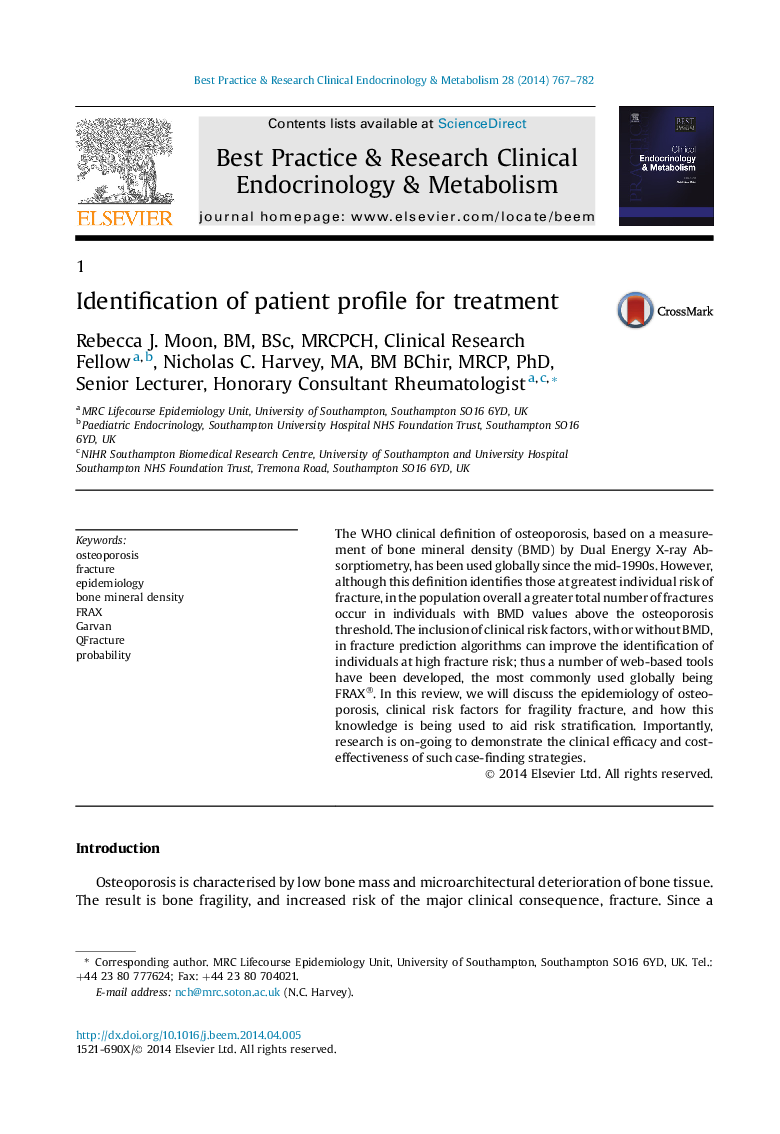| Article ID | Journal | Published Year | Pages | File Type |
|---|---|---|---|---|
| 2791493 | Best Practice & Research Clinical Endocrinology & Metabolism | 2014 | 16 Pages |
The WHO clinical definition of osteoporosis, based on a measurement of bone mineral density (BMD) by Dual Energy X-ray Absorptiometry, has been used globally since the mid-1990s. However, although this definition identifies those at greatest individual risk of fracture, in the population overall a greater total number of fractures occur in individuals with BMD values above the osteoporosis threshold. The inclusion of clinical risk factors, with or without BMD, in fracture prediction algorithms can improve the identification of individuals at high fracture risk; thus a number of web-based tools have been developed, the most commonly used globally being FRAX®. In this review, we will discuss the epidemiology of osteoporosis, clinical risk factors for fragility fracture, and how this knowledge is being used to aid risk stratification. Importantly, research is on-going to demonstrate the clinical efficacy and cost-effectiveness of such case-finding strategies.
